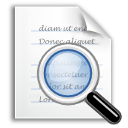As a scientific illustrator, you handle a treasure trove of personal and client data, ranging from research materials to sensitive information. Ensuring the utmost security and privacy of this data is crucial. Let's dive into some practical steps you can take to implement robust data protection measures:
1. Know Your Data:
Start by understanding what types of data you collect, process, or store. Categorize them into different levels of sensitivity – from general information to highly confidential client details.

2. Access Control:
Limit access to data based on a need-to-know basis. Not everyone needs access to everything. Use strong, unique passwords and consider two-factor authentication for added security.
3. Encryption:
Implement encryption techniques to scramble data, making it unreadable to unauthorized individuals. This includes encrypting files, emails, and any data transmissions.

4. Secure Storage:
Store data in secure locations, whether it's physical documents or digital files. Consider using secure cloud storage services with strong encryption and robust access controls.
5. Regular Updates and Patches:
Keep your software, operating systems, and applications up to date. Regularly apply security patches to fix vulnerabilities that could be exploited by malicious actors.
6. Firewalls and Antivirus:
Install and maintain firewalls and reputable antivirus software to provide a strong defense against cyber threats.
7. Data Retention Policies:
Establish clear guidelines on how long you will retain personal and client data. Delete or archive data that is no longer needed, following legal and ethical requirements.

8. Training and Awareness:
Educate yourself and your team about data protection best practices. Stay informed about the latest threats and security trends. Train staff to recognize phishing attempts and other social engineering tactics.
9. Secure Communication:
Use encrypted communication methods for sharing sensitive information with clients or collaborators. Secure email services and encrypted messaging apps can provide an extra layer of protection.

10. Backup Regularly:
Regularly back up your data to a secure location, either on-premises or in the cloud. This ensures that even if data is compromised, you have a safe copy to restore from.
11. Vendor and Third-Party Risk:
If you work with external vendors or collaborators, ensure they also adhere to strong data protection practices. Review their security measures and data handling policies.
12. Incident Response Plan:
Develop a clear plan for how you will respond in case of a data breach or security incident. This includes steps for containment, notification, and recovery.
13. Legal and Ethical Compliance:
Familiarize yourself with relevant privacy laws and regulations in your region. Make sure your data handling practices align with these legal requirements.
14. Client Consent and Transparency:
Be transparent with your clients about how their data will be used and protected. Obtain clear consent for data processing activities.

15. Regular Audits and Assessments:
Conduct regular assessments of your data protection measures. Perform security audits to identify vulnerabilities and areas for improvement.
Conclusion
By implementing these data protection measures, you'll create a strong shield around personal and client data. As a responsible scientific illustrator, you not only enhance your professional credibility but also contribute to a safer and more secure digital environment for everyone involved.
Module Conclusion
In Module 8, we've embarked on a comprehensive journey through the art of protecting your own intellectual property while recognizing the value of transparency has emerged as a guiding principle for ethical digital marketing.

We've dived into the responsibilities of safeguarding personal and client data, complying with privacy regulations, and the importance of obtaining proper consent in this digital age.
This module has equipped us with a robust ethical framework, empowering us to navigate the intricacies of the field with integrity, transparency, and respect for the legal and ethical standards that underpin our profession.
As we move forward, this foundation will serve as a compass to guide us in making ethical decisions and promoting our art in a manner that aligns with the highest standards of professionalism.
